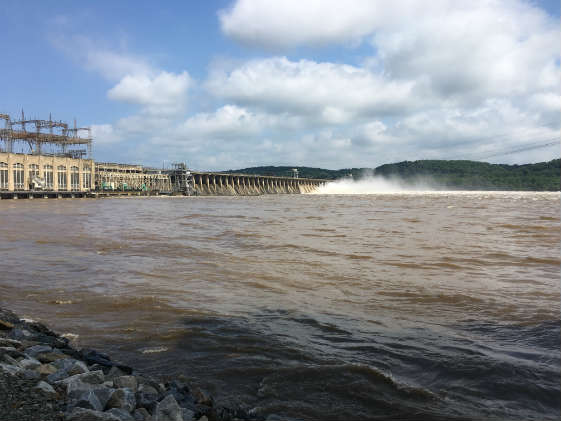Avoid the Upper Bay for the Next Few Days
The Maryland Department of Natural Resources advises commercial and recreational anglers, boaters and watermen to avoid the Susquehanna River and Upper Chesapeake Bay over the next few days due to the heavy water flows and swells downstream of Conowingo Dam.

Recent summer rain storms in the mid-Atlantic region have dumped record amounts of rain in the watershed producing historic flows at the dam ( over 300,000 cubic feet per second) not seen since Tropical Storm Lee in 2011.
“It is vitally important that anglers and boaters avoid the area downstream of the dam as heavy flows and accompanying marine debris – both submerged and superficial – can pose a serious threat to people and vessels,” Maryland Natural Resources Secretary Mark Belton said. “We expect the issue to continue through the weekend and ask that people steer clear of the Upper Bay until it is safe to navigate and recreate.”
The department is actively monitoring the situation at the Conowingo Dam from both a public safety and environmental perspective as the dam’s reservoirs have reached capacity and can no longer hold back or trap nutrients and sediment coming from the northern reaches of the watershed. High flows containing pollutants may scour or sweep over the dam, impacting Chesapeake Bay Watershed Agreement goals as well as marine life, such as blue crabs, and submerged aquatic vegetation.
The Maryland Department of Natural Resources and our partners at the U.S. Geological Survey and University of Maryland Center for Environmental Science will be conducting water sampling cruises today and through the weekend to monitor Conowingo Dam and Chesapeake Bay for excess nutrients, sediment and turbidity, which can degrade water quality, cause algal blooms, increase hypoxia levels and inhibit underwater grass growth. Additionally, freshwater from bay tributaries – such as the Susquehanna – can increase mortality of more brackish and saltwater species like oysters.
“We will be monitoring the flow from the Susquehanna River and all its related impacts on the bay, both in the short and long term,” Belton said. “While it is too early to say what effects these storms will have, there certainly will be impact on the health of Chesapeake Bay and the broader watershed.”
The department has provided additional flexibility to commercial crabbers in the Upper Chesapeake Bay allowing them to remove their gear from waters north of the Chesapeake Bay Bridge so their equipment does not get damaged by anticipated debris. The department’s Hydrographic Operations unit stands ready to assist Exelon Generation in removing any hazardous marine debris that may pose a safety hazard downstream of Conowingo Dam.




